Evaluation of nutritional status and clinical depression classification using an explainable machine learning method
- PMID: 37229464
- PMCID: PMC10203418
- DOI: 10.3389/fnut.2023.1165854
Evaluation of nutritional status and clinical depression classification using an explainable machine learning method
Abstract
Introduction: Depression is a prevalent disorder worldwide, with potentially severe implications. It contributes significantly to an increased risk of diseases associated with multiple risk factors. Early accurate diagnosis of depressive symptoms is a critical first step toward management, intervention, and prevention. Various nutritional and dietary compounds have been suggested to be involved in the onset, maintenance, and severity of depressive disorders. Despite the challenges to better understanding the association between nutritional risk factors and the occurrence of depression, assessing the interplay of these markers through supervised machine learning remains to be fully explored.
Methods: This study aimed to determine the ability of machine learning-based decision support methods to identify the presence of depression using publicly available health data from the Korean National Health and Nutrition Examination Survey. Two exploration techniques, namely, uniform manifold approximation and projection and Pearson correlation, were performed for explanatory analysis among datasets. A grid search optimization with cross-validation was performed to fine-tune the models for classifying depression with the highest accuracy. Several performance measures, including accuracy, precision, recall, F1 score, confusion matrix, areas under the precision-recall and receiver operating characteristic curves, and calibration plot, were used to compare classifier performances. We further investigated the importance of the features provided: visualized interpretation using ELI5, partial dependence plots, and local interpretable using model-agnostic explanations and Shapley additive explanation for the prediction at both the population and individual levels.
Results: The best model achieved an accuracy of 86.18% for XGBoost and an area under the curve of 84.96% for the random forest model in original dataset and the XGBoost algorithm with an accuracy of 86.02% and an area under the curve of 85.34% in the quantile-based dataset. The explainable results revealed a complementary observation of the relative changes in feature values, and, thus, the importance of emergent depression risks could be identified.
Discussion: The strength of our approach is the large sample size used for training with a fine-tuned model. The machine learning-based analysis showed that the hyper-tuned model has empirically higher accuracy in classifying patients with depressive disorder, as evidenced by the set of interpretable experiments, and can be an effective solution for disease control.
Keywords: classification; clinical depression; depression; interpretability; machine learning; nutrition.
Copyright © 2023 Hosseinzadeh Kasani, Lee, Park, Yun, Jang and Lee.
Conflict of interest statement
The authors declare that the research was conducted in the absence of any commercial or financial relationships that could be construed as a potential conflict of interest.
Figures


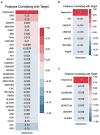
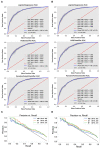
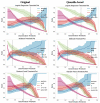
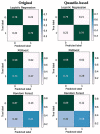

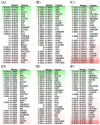
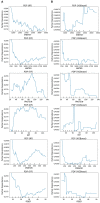

Similar articles
-
Comparative effectiveness of explainable machine learning approaches for extrauterine growth restriction classification in preterm infants using longitudinal data.Front Med (Lausanne). 2023 Nov 29;10:1166743. doi: 10.3389/fmed.2023.1166743. eCollection 2023. Front Med (Lausanne). 2023. PMID: 38093981 Free PMC article.
-
Prediction Model of Osteonecrosis of the Femoral Head After Femoral Neck Fracture: Machine Learning-Based Development and Validation Study.JMIR Med Inform. 2021 Nov 19;9(11):e30079. doi: 10.2196/30079. JMIR Med Inform. 2021. PMID: 34806984 Free PMC article.
-
Explainable machine learning approach to predict extubation in critically ill ventilated patients: a retrospective study in central Taiwan.BMC Anesthesiol. 2022 Nov 14;22(1):351. doi: 10.1186/s12871-022-01888-y. BMC Anesthesiol. 2022. PMID: 36376785 Free PMC article.
-
A Systematic Evaluation of Supervised Machine Learning Algorithms for Cell Phenotype Classification Using Single-Cell RNA Sequencing Data.Front Genet. 2022 Feb 23;13:836798. doi: 10.3389/fgene.2022.836798. eCollection 2022. Front Genet. 2022. PMID: 35281805 Free PMC article.
-
Scoping Review on the Multimodal Classification of Depression and Experimental Study on Existing Multimodal Models.Diagnostics (Basel). 2022 Nov 3;12(11):2683. doi: 10.3390/diagnostics12112683. Diagnostics (Basel). 2022. PMID: 36359525 Free PMC article.
Cited by
-
Comparative effectiveness of explainable machine learning approaches for extrauterine growth restriction classification in preterm infants using longitudinal data.Front Med (Lausanne). 2023 Nov 29;10:1166743. doi: 10.3389/fmed.2023.1166743. eCollection 2023. Front Med (Lausanne). 2023. PMID: 38093981 Free PMC article.
-
Machine Learning in Predicting Child Malnutrition: A Meta-Analysis of Demographic and Health Surveys Data.Int J Environ Res Public Health. 2025 Mar 18;22(3):449. doi: 10.3390/ijerph22030449. Int J Environ Res Public Health. 2025. PMID: 40238576 Free PMC article.
-
Global, Regional, and National Epidemiology of Depression in Working-Age Individuals, 1990-2019.Depress Anxiety. 2024 Aug 24;2024:4747449. doi: 10.1155/2024/4747449. eCollection 2024. Depress Anxiety. 2024. PMID: 40226639 Free PMC article.
-
Nutritional Impairment and Quality of Life Trajectories Among Older Adults With Advanced Cancer.J Am Geriatr Soc. 2025 Jul 4:10.1111/jgs.19617. doi: 10.1111/jgs.19617. Online ahead of print. J Am Geriatr Soc. 2025. PMID: 40616260
-
A Scoping Review of Artificial Intelligence for Precision Nutrition.Adv Nutr. 2025 Apr;16(4):100398. doi: 10.1016/j.advnut.2025.100398. Epub 2025 Feb 28. Adv Nutr. 2025. PMID: 40024275 Free PMC article.
References
-
- Layne C, Merry J, Christian J, Ginn P. Motivational deficit in depression. Cognit Ther Res. (1982) 6:259–73. 10.1007/BF01173575 - DOI
LinkOut - more resources
Full Text Sources

